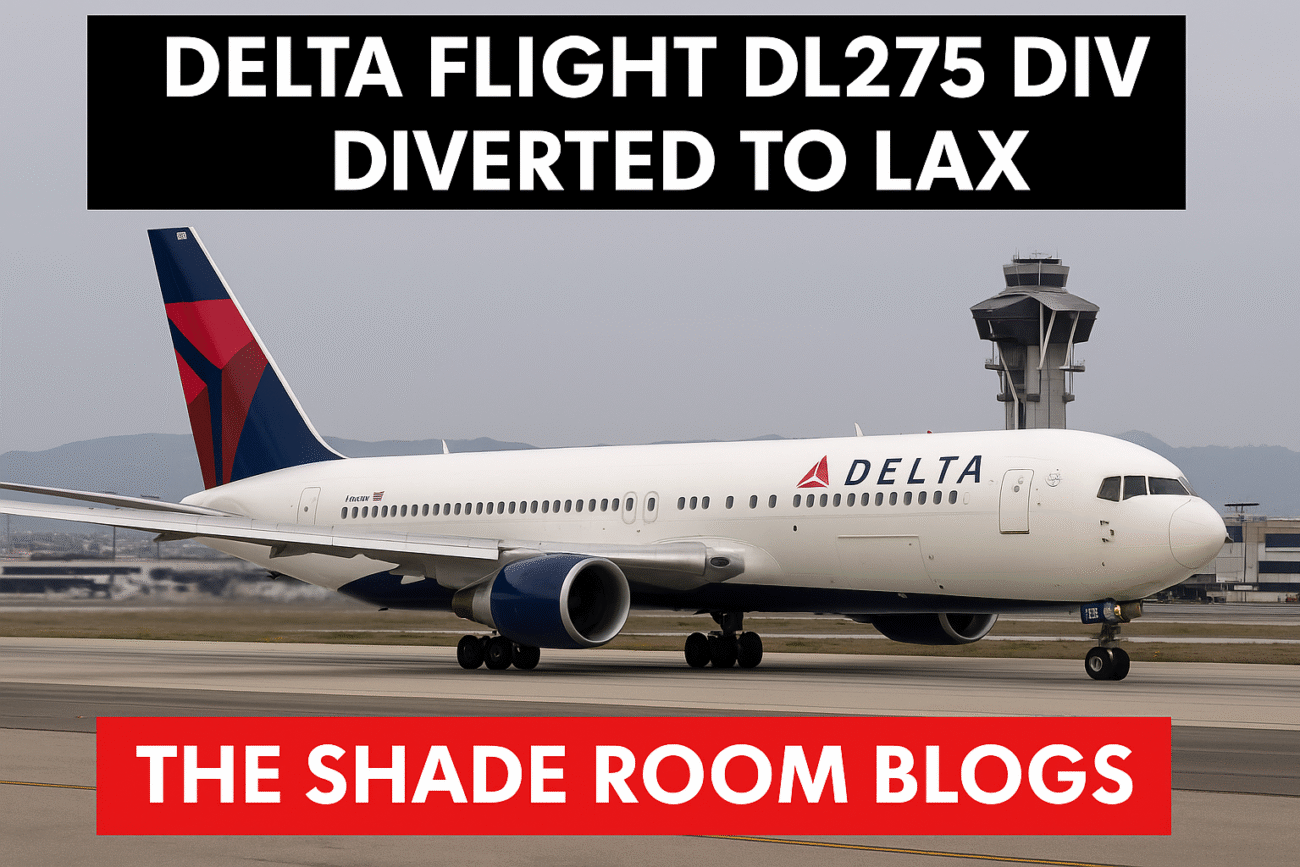Delta Flight DL275 Diverted to LAX — a headline that made waves across aviation news and social media. But beyond the bold text and viral tweets, there was a real situation in the sky, a crew with critical decisions to make, and passengers relying on calm leadership. In this article, we’ll take a clear, human look at what happened aboard Delta Flight DL275, why it was diverted to Los Angeles (LAX), and how the crew’s professionalism turned a tense moment into a safe outcome.
What Happened on Delta Flight DL275?
Delta Flight DL275 was originally scheduled to fly from Seoul-Incheon (ICN), South Korea, to Atlanta Hartsfield-Jackson (ATL), one of the longest non-stop flights in Delta’s international network. About halfway through the trans-Pacific journey, the aircraft experienced a technical issue that required an urgent yet controlled response from the flight crew.
Though initial reports speculated everything from mechanical failure to cabin pressure concerns, Delta later confirmed that the diversion was made out of an abundance of caution due to a mechanical irregularity. The decision: reroute the aircraft to Los Angeles International Airport (LAX), the nearest suitable airport with full Delta operations and maintenance support.
Why Was LAX Chosen?
Many travelers unfamiliar with airline logistics might wonder: why LAX?
Los Angeles International Airport is one of Delta’s key West Coast hubs, with the infrastructure to handle large aircraft like the Airbus A350 (the model used for this flight), including:
- Runway capacity
- Maintenance teams
- Customs and immigration for international arrivals
- Crew and passenger support
By diverting to LAX, Delta ensured that both passengers and the aircraft received the attention they needed quickly and safely. This choice reflects the airline’s commitment to operational efficiency and passenger care.
Inside the Cockpit: The Crew’s Calm Response
When unexpected issues arise mid-flight, the professionalism of the flight crew becomes the passengers’ biggest asset. On Delta Flight DL275, the pilots acted decisively and according to safety protocols.
Once the irregularity was identified, the captain:
- Assessed the situation with the first officer and onboard engineers.
- Contacted Delta’s operational control center.
- Communicated transparently with passengers, explaining the situation in calm, clear terms.
- Initiated the diversion to LAX with a focus on passenger safety.
There was no panic—just preparation.
Cabin crew members then moved quickly to reassure passengers, assist with seatbelt checks, and ensure the cabin remained calm and informed. Passengers later praised the staff for their empathy and professionalism, especially during the descent into LAX.
Lalo Symphonie Espionage: Uncovering the Hidden Secrets
Passenger Experience: “Handled Like Pros”
After safely landing at LAX, passengers were rebooked on alternate flights or provided accommodations as needed. Social media posts and interviews revealed one common theme: gratitude.
One passenger tweeted:
“Delta Flight DL275 diverted to LAX mid-flight. Crew kept us informed and calm the whole time. Landed safely. Handled like pros. #thankful #DeltaAirLines”
Another commented:
“These things happen, but it’s how they’re managed that counts. Massive respect to the DL275 crew today.”
These real reactions highlight a crucial point: airlines can’t always prevent mechanical problems, but they can control how they respond.
What’s Next for DL275?
After the safe landing, Delta mechanics inspected the aircraft at LAX. Once cleared, the plane was either returned to service or replaced for the remaining journey to Atlanta.
Delta issued an apology for the inconvenience and emphasized that passenger safety will always take precedence over punctuality.
The airline also offered compensation and travel credits to affected travelers, further reinforcing its customer-first approach.
A Teachable Moment for All Travelers
The story of Delta Flight DL275 diverted to LAX is more than a travel disruption—it’s a reminder of the complexity and safety-first nature of commercial aviation.
Some key takeaways:
- Diversions are not disasters. They’re proactive safety measures.
- Flight crews are highly trained to deal with unexpected scenarios.
- Airlines prioritize safety over schedules—always.
If you ever experience a diversion like this, remember: you’re in good hands. Delta, like all major carriers, operates under strict FAA and international safety regulations, and its crews are equipped to handle even the most complex challenges.
Final Thoughts
Delta Flight DL275’s unexpected detour to LAX may have delayed some passengers’ plans, but it also showed how a potential emergency was managed with precision, professionalism, and empathy.
The flight crew didn’t just follow protocol—they delivered care and confidence at 35,000 feet.
As travelers, it’s easy to get frustrated by delays or changes. But when you see how well the team behind your flight handles the unexpected, it’s a powerful reminder that you’re not just a seat number. You’re a valued passenger, and your safety comes first.
So next time you board a flight, remember the crew behind the cockpit door and in the aisles. Because when challenges arise, they’re the reason you arrive safely—sometimes even in a different city than planned.
